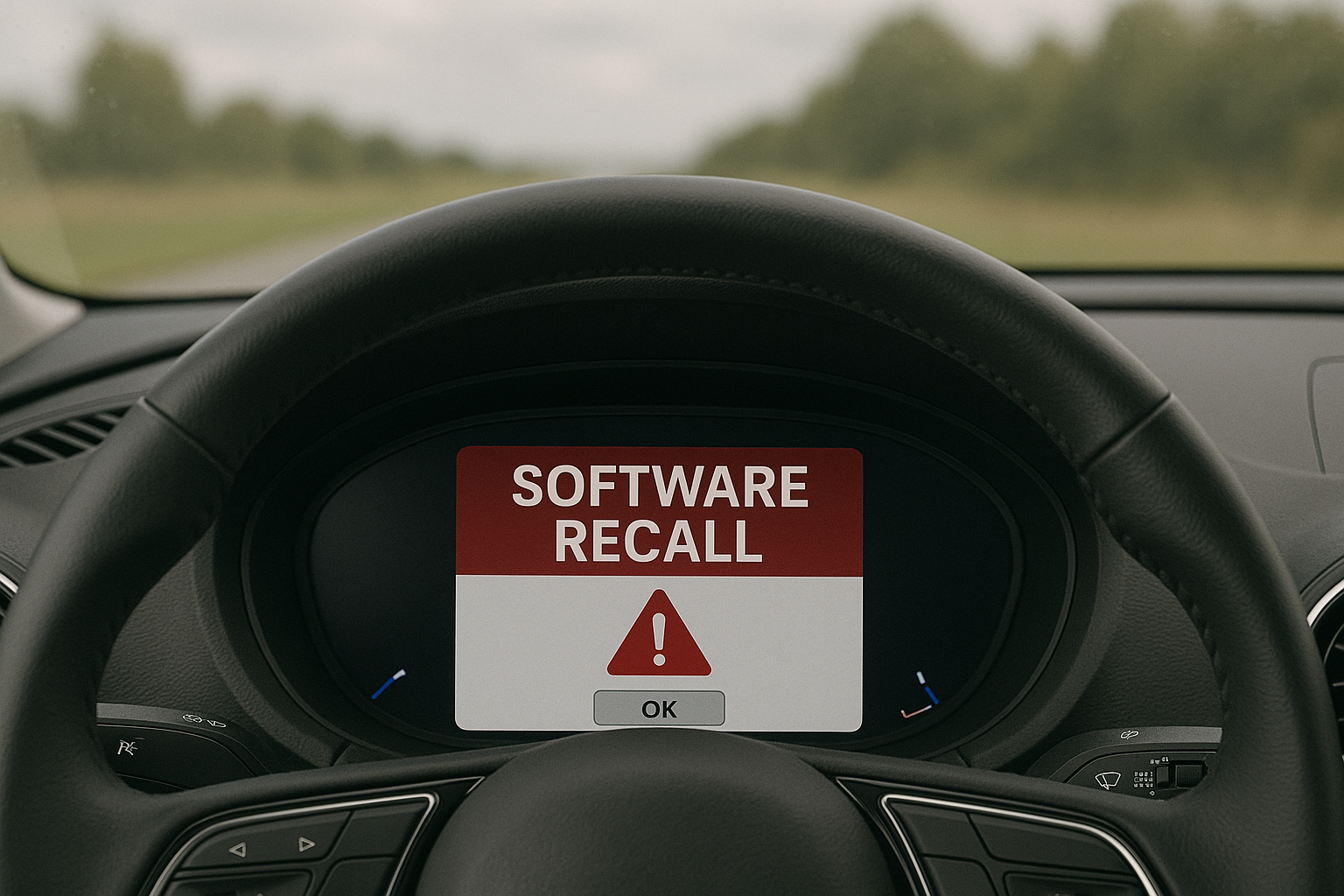Automotive Software Recalls - 2025 Trends and Historical Perspective

Automotive Software Recalls: 2025 Trends and Historical Perspective
Introduction
As vehicles become increasingly software-dependent, software-related recalls have emerged as a critical industry concern. Let’s take a look at the trends and implications of these recalls in 2025 compared to 2024.
2025 Software Recalls at a Glance
Through May 2025, there have been 69 software-related recalls affecting 2.15 million vehicles—significantly fewer than 2024’s 167 recalls impacting 14.9 million vehicles. Volvo’s rearview camera recall (413,151 vehicles) represents the largest 2025 software recall, accounting for nearly 20% of affected vehicles.
Historical Trajectory
Software recalls show a clear upward trajectory:
- Pre-2010: Under 30 recalls annually affecting fewer than 200,000 vehicles
- 2010-2015: Rapid increase to 45-80 recalls annually. 2014 was also the year that OTA recalls were first introduced.
- 2016-2020: Stabilized at 70-80 recalls but with growing vehicle impact
- 2021-2024: Consistently exceeding 100 recalls annually affecting millions
This reflects the transformation from primarily mechanical vehicles to software-controlled platforms with over 100 million lines of code in modern vehicles.
2025 vs. 2024: Key Distinctions
- Volume: 2025 shows fewer recalls year-to-date (69 vs. 167) and significantly fewer affected vehicles (2.15M vs. 14.9M)
- Completion Rates: 14.8% for 2025 vs. 59.8% for 2024, expected given the recency of 2025 recalls
- Common Issues: Both years dominated by rearview camera failures, dashboard malfunctions, stability control issues, and power loss problems
- OTA Integration: Increasing percentage of recalls include over-the-air update options
Prevalent Software Issues
- Backup Camera Failures: Most common recall reason, reflecting stricter FMVSS 111 enforcement
- Dashboard Malfunctions: Warning lights and instrument panel issues remain prominent
- EV Battery Management: Growing concern as electric vehicles gain market share
- Regulatory Compliance: Heightened scrutiny regarding Federal Motor Vehicle Safety Standards
OTA Updates: The New Standard
Over-the-air updates have transformed recall management. Major manufacturers have widely adopted OTA solutions, with Tesla leading the industry through nearly universal implementation. As traditional manufacturers rapidly embrace this technology, the industry is seeing significantly higher completion rates compared to conventional dealer-based recall methods.
Completion Rate Challenges
Despite improvements, completion rates remain problematic. While historical rates have improved dramatically from near-zero to 60-80% in recent years, there’s a notable disparity between recall methods. OTA-enabled recalls consistently achieve superior completion rates of 95% or higher, highlighting the significant gap between traditional and modern update approaches.
Industry Implications
- Software Complexity: Rising software dependence increases potential safety issues
- Regulatory Focus: More FMVSS-related recalls indicate heightened regulatory attention
- EV-Specific Challenges: Battery management and power systems require specialized solutions
- OTA Necessity: Remote update capability transitioning from luxury to safety infrastructure
Automakers must prioritize software quality and update deployment to ensure vehicle safety. The industry’s ability to adapt to these challenges will be crucial as vehicles become more software-defined.
Conclusion
While 2025 software recalls appear reduced from 2024’s peak, software-related safety issues remain significant. Growing software complexity and the regulated addition of popular safety oriented features like backup cameras are contributing factors. OTA capabilities offer improved recall management, but ensuring universal update deployment remains challenging. Too often, software requires a trip to the dealership for updates. The industry’s ability to manage software quality and efficiently deploy updates will be crucial for vehicle safety in an increasingly software-defined automotive landscape.